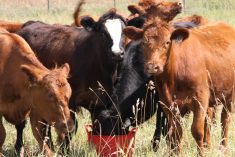A year of sinking commodity prices could drive up the amount of money paid by the Alberta farm income disaster program.
The provincial department of agriculture is forecasting more participants in the program next year as it tracks grain commodity prices, the fall calf run and the dollar exchange. Department officials should know by Oct. 15 how serious the damage is and will submit their request to the treasury department, said the minister of agriculture.
“We see an increase in the farm income disaster program,” said Ed Stelmach.
Read Also

Animal protection delivery to change in Saskatchewan
The Saskatchewan government is looking for a new agency to handle animal welfare after Animal Protection Services of Saskatchewan decided not to renew its contract next year.
One of the factors driving a request for more program dollars is the freefall in the hog industry, he said.
British Columbia has incorporated a similar plan, which Alberta administers to cut costs.
Bringing back a program like the national tripartite red meat stabilization subsidy won’t work. The Americans would quickly retaliate with a countervail duty.
“If it wasn’t for the American market we wouldn’t be able to survive. We export close to 65 percent of our agricultural output out of this province and they are our number one market,” said Stelmach.
The present program is considered trade-rule friendly and shouldn’t be considered a direct subsidy to a single commodity, said Stelmach. Producers apply for the money based on an overall reduction of their farm income to 70 percent of the average of the past three years.
The minister also believes many operations can withstand this downturn in the hog cycle.
“There is a tremendous amount of equity. Most of the people have invested in the operations with cash and very few are really working on borrowed money so they are better prepared to take a downturn in the price, as opposed to the Seventies where government encouraged increased production by borrowing,” said Stelmach.















